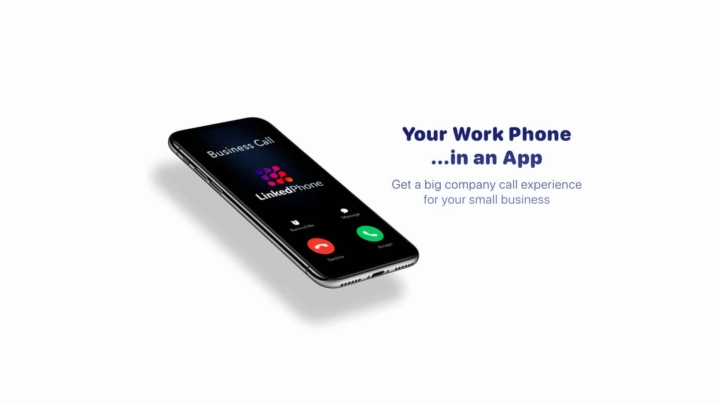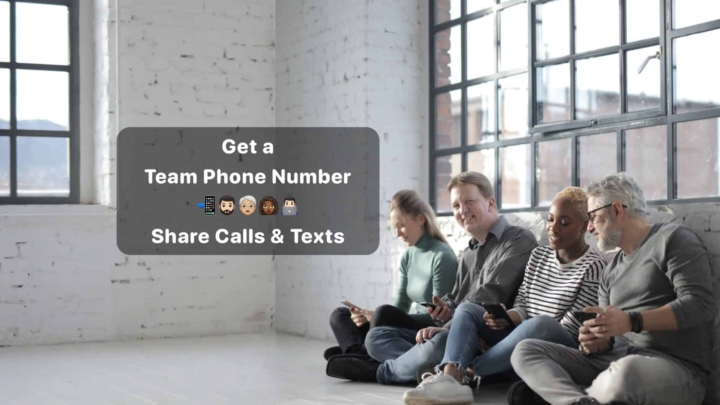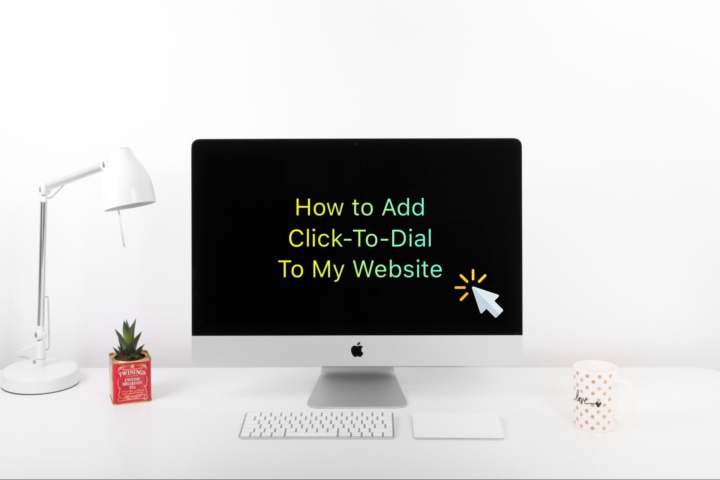31 Rules of Business Etiquette No Professional Should Break
What is Business Etiquette?
Business etiquette is the system of written and unwritten rules which govern expectations of personal & social behavior in the workplace. There is no universal set of rules for workplace etiquette, instead it is defined by social convention, experience, and any ethical codes which govern a particular business. In short, it means displaying good manners with business colleagues.
Etiquette is defined by the Cambridge dictionary as “the set of rule or customs that control accepted behavior in particular social groups or social situations.” Business etiquette is the set of rules for behavior in business settings or situations.
Although times have changed, these rules are just as important and relevant as they were in the past. In fact, the act of adhering to these rules, or breaking them, can dramatically impact your business.
LinkedPhone serves the small business community with local & toll-free business numbers that work with your cell phone, desk phone, & laptop. Add a 2nd phone number to your cell phone with our mobile app. Talk & text with clients on the go. Add team members too. Finally break free from the desk phone. At LinkedPhone, freedom rings! 🔔📱💻☎️
Why is Business Etiquette Important?
Practicing proper etiquette in a business environment can influence your business success in the following ways:
Creates a positive first impression by starting out on the right foot on an initial meeting. Being punctual, respectful, and professional instills confidence in the other person, making them want to do business with you or work with you.
Improves workplace interactions by creating civilized, proper, and respectful office communications and collaboration. Things will run more smoothly when everyone in the workplace behaves in a considerate and professional manner by adhering to business etiquette.
Promotes business growth since etiquette helps you behave in a professional and respectful manner. This instills trust in potential customers and improves customer experience when interacting with you and your staff. This aids in customer retention and increases sales.
Enhances the company and personal image by consistently behaving in a courteous, considerate, and professional manner. It changes the way others view you and your organization.
Now that you understand the importance of knowing business etiquette, here are 31 rules of business etiquette every professional should never break.
31 Rules of Business Etiquette
1. Be Punctual
Arriving late is inconsiderate and unprofessional. It gives the impression you don’t value the time of everyone in attendance and sends the message that you don’t want to be there. Being on time, or preferable 5 to 10 minutes early is ideal, but unforeseen circumstances occasionally arise, making it impossible to arrive on schedule. As soon as you know you’re going to be late, be sure to communicate this to the appropriate parties.
2. Dress appropriately
Proper attire will vary depending on the specific business occasion. What is acceptable when working remotely is certainly different than what you should wear to the office or when attending a business dinner. Be sure to check the dress code in advance.
3. Practice good hygiene
Although business has become more casual over the years, good hygiene is still important. A professional and tidy appearance is essential whenever you are visible in business situations, even when the interaction is virtual. But, when it comes to being in the office, cleanliness is considerate since people don’t want to smell you as you approach.
4. Provide your full name when introducing yourself
Share your first and last name the first time you meet them. This is more professional and differentiates you from others with your first name, especially if yours is a common name like Susan, Mary, John, or Tom. Doing so helps them remember you and makes it easier for them to connect with you on social media if desired.
5. Pay attention to how the other person introduces themselves
It’s important to listen carefully when others share their name when you first meet them. Listen to the pronunciation and repeat it back to them. This will ensure you heard them correctly and help you remember their name. Plus, they may introduce themselves by using a nickname that they prefer to be called. For example, someone with the name Margaret might introduce herself as Maggie. Make note of this and use it when calling them by name. This will make them feel more comfortable with you.
6. Admit it when you forget someone’s name
Remembering names is important but not always easy, especially when you’ve met them previously, but it was a while ago. When you forget a name, it’s best to admit it and ask them to refresh your memory. Say something like, “I’m sorry, it’s been a while, I can’t recall your name. Please remind me what it is.” This is perfectly acceptable and appreciated.
7. Introduce others
When you join a conversation, be sure to introduce anyone accompanying you if you are unsure if everyone in the group knows them.
8. Stand when being introduced
When meeting someone in person, it’s polite to stand when being introduced.
9. Greet everyone
When entering a meeting, don’t just start speaking with one person. Be courteous and greet everyone present so you don’t leave anyone out of the conversation. Then, you can speak to one specific person alone if needed.
10. Offer a handshake
It’s traditional practice to offer a firm handshake when meeting someone, especially for the first time. Today it is common to offer a fist bump or elbow bump to avoid spreading germs. And odds are greater than you might be meeting the person virtually. Then, of course, a handshake is impossible.
11. Make eye contact
Maintaining eye contact, especially when meeting for the first time shows respect and acknowledgment. Plus, eye contact helps you build trust since it was historically thought that lack of eye contact was a sign of being untruthful.
12. Practice active listening
Active listening is the act of full, uninterrupted engagement, by not only hearing but feeling what the other person has to say. It involves remaining completely attentive instead of planning what to will say next. It also means acknowledging your understanding by nodding, recapping what you heard, and asking clarifying questions.
13. Watch your language
Although the business environment has become more casual over the years, it is seldom appropriate to curse in business communications. They come across as unprofessional, undignified, or uncouth and may damage your image.
14. Put away your phone
Frequently checking your mobile device is common practice today. But when you’re in an in-person or video meeting, put your phone away. Checking it during the meeting is unprofessional and rude as well as distracting. This can make you look like you are disinterested in the matter at hand.
15. Don’t interrupt
It is rude to interrupt when someone else is speaking. Muting yourself during webinars or video meetings applies here as well when you aren’t speaking. This is especially important if you are working from home where a child or dog might decide to speak out of turn, potentially disrupting the event or call.
16. Exit politely
When attending a group event, be sure to excuse yourself when leaving a conversation. Don’t simply walk away without saying something like, “It was a pleasure meeting you.” or “I enjoyed speaking with you.”
17. Communicate in a professional manner
Regardless of whether you are communicating verbally or in writing, be sure to always be professional. This is especially true when writing text or email messages. Don’t say anything that you wouldn’t say in person.
18. Send personalized handwritten thank you notes
Automated emails saying thank you for the order have become commonplace. But handwritten thank you notes take extra effort and make a professional impression. So go the extra mile by sending these personalized communications. And when there are multiple decision-makers involved, don’t forget to send one to each person separately.
19. Use a professional email address
It’s best to use your company email address for business. But if you are self-employed or use your personal email for some of your work-related communications, use a professional-sounding email.
Your email should include your name so it is clear that you are the recipient. And you should never use emails that are unprofessional like “studmuffin@…” or “slugger@…” These are inappropriate and create the wrong image.
20. Use appropriate greetings
Whether speaking in person or in writing you should always use professional greetings. This is especially important in emails. Don’t say What up? or Hey! These are too casual. Use professional greetings that reflect the relationship between you and the recipient but keep it business-like.
21. Proofread all written communications before sending
Between emails, text messages, snail mail, social media, and Slack-type channels, business professionals send more written communications today than ever before. Since each message, regardless of how long or short, reflects on you it needs to be professional and well-written. So, take the time to proofread prior to hitting send to correct typos, incorrect auto-correct changes, grammar, and spelling. It only takes a moment. And if you need help you can use a free web extension like Grammarly
22. Reply to all only if appropriate
There is a time to ‘reply to all’ and there is a time to simply reply. Knowing the difference is important or you risk frustrating others. So, ‘reply to all’ when everyone included in an email communication needs to see all the related responses. This also ensures that all parties remain in the communication loop. But, if one person is gathering input from a group of people, don’t fill everybody’s inboxes with responses that only one person needs to see. Taking the time to do this is courteous and professional.
23. Use a professional headshot
It’s okay to use a picture of yourself in a bathing suit for personal social media accounts. But when it comes to any social accounts used for business, you need to use a professional-looking photo of yourself dressed for success. This is important for making good first impressions and maintaining a good personal and company image.
24. Request access
If you want to discuss something with someone in the office, always knock before entering someone’s office. When working remotely send a text or email before calling to ensure the time is right.
25. It’s your treat if you extend the business invitation
If you extend an invitation, whether it’s coffee, cocktails, breakfast, lunch, or dinner, it’s your responsibility to pay the check. It comes across as unprofessional and discourteous if you invite someone to join you and then expect to split the check unless you discuss this in advance.
26. Practice good table manners
Professional behavior is just as important when dining out as it is in any other business meeting or interaction. So, use good table manners when sharing a meal with colleagues, business associates, or customers. Examples of this is not chewing with your mouth open, refraining from looking at your phone, and engaging in conversation with your fellow diners.
27. Neatness matters
Maintaining a neat workspace in the office or a tidy office appearance for virtual meetings is a professional courtesy. Of course, if your home office is a mess, you can always use a virtual background during video calls! Neatness extends beyond your own workspace, though. It also includes cleaning up after yourself in shared areas of an office such as the breakroom, company printer, or workrooms. It’s common curtesy to clean up and straighten an area when you are done with it. Nobody should need to do this for you.
28. Avoid gossip
Talking about someone when they are not present is rude. Plus talking about another party is damaging to the subject of the gossip and reflects poorly on you.
29. Be social, but don’t tell all
Although you want to appear friendly and build rapport to avoid coming across as snobbish or antisocial with coworkers, business associates, and customers, don’t go overboard by sharing intimate details of your personal life.
30. Modulate your volume
It’s important to be aware if you have a voice that tends to be loud and carry or you raise your voice when you get excited. People you’re communicating with will appreciate it if you keep the volume at a moderate level when speaking in person, by phone, or via video.
31. Be mindful of nonverbal cues
Nonverbal cues play a large part in communications. Based on research by Albert Mehrabian, 7% of how a message is perceived is based on the words that are spoken, 38% is how the words are spoken, and 55% is based on facial expression. It’s always important to keep this in mind when communicating, depending on the mode of communication being used.
Practicing Good Business Etiquette Pays Off
These 31 rules of proper business etiquette are important to remember. Fortunately, most of them are common sense. Making the effort to practice these in the course of your day-to-day business interactions will pay off. It will elevate your personal and professional image while helping you grow your business.
Business Growth Toolkit
Get the latest thought leadership insights on growing your business plus occasional LinkedPhone updates. We respect your inbox!
Small Business Resources
A special high five to Margot Howard for her outstanding research and contributions to this article. We love working with and supporting like-minded entrepreneurs who are passionate about business success strategies. Thank you Margot! ❤️
Get In Touch
We would love to hear from you.
Please contact us at any time with questions or feedback.























